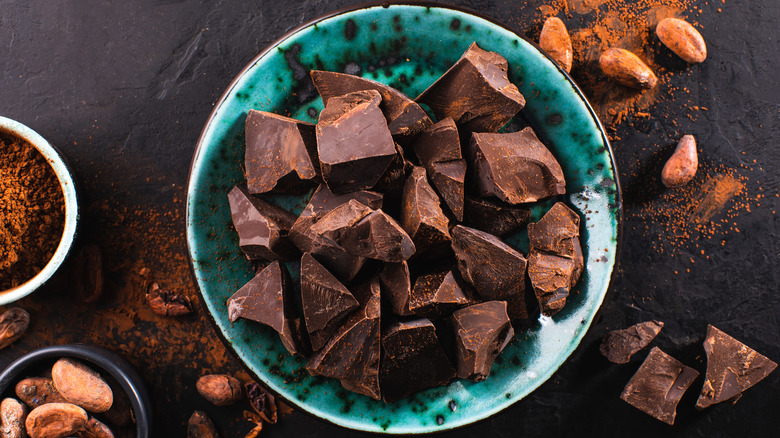The Big Difference Between Milk Chocolate And Dark Chocolate
Thanks to the cacao tree, people have been enjoying chocolate all over the world for thousands of years. Native to South and Central America, chocolate dates all the way back to 1,900 B.C. (via Well+Good). While it was initially consumed as a fermented beverage, it has now evolved into a sweet and tasty treat. After the seeds of the cacao tree are fermented, dried, roasted, and turned into cacao nibs, they can be processed into liquids, powders, and solid chocolate bars.
The amount of processing that takes place, however, can affect the quality of the nutrients in the chocolate. For instance, chocolate naturally contains important nutrients like antioxidants, but chocolate bars that are highly processed tend to lose their nutritional value. Since milk chocolate is significantly more processed, it does not contain the same health and nutritional benefits as dark chocolate. Milk chocolate also contains more milk and sugar, which only adds extra fat to each serving.
Dark chocolate has more nutrients
Dark chocolate retains more of its nutritional content, making it the healthier option of the two. Since dark chocolate is less processed, it contains more cacao, which is where the nutrients lie (via Shape). For instance, cacao is a great source of flavonoids — a class of phytonutrients that act as antioxidants.
Flavonoids can improve heart health by lowering blood pressure and preventing inflammation. They can also help regulate cholesterol levels and reduce cell damage caused by heart disease. That why it's important to look for dark chocolate with high levels of cacao. Varieties of dark chocolate that contain at least 65% cacao are the most ideal.
However, just because dark chocolate may offer health benefits doesn't mean it should make up a large chunk of your daily diet. It is still candy, after all. Like any other food, it's best to consume dark chocolate in moderation and make room for other flavonoid-rich foods, like fruits and vegetables.


